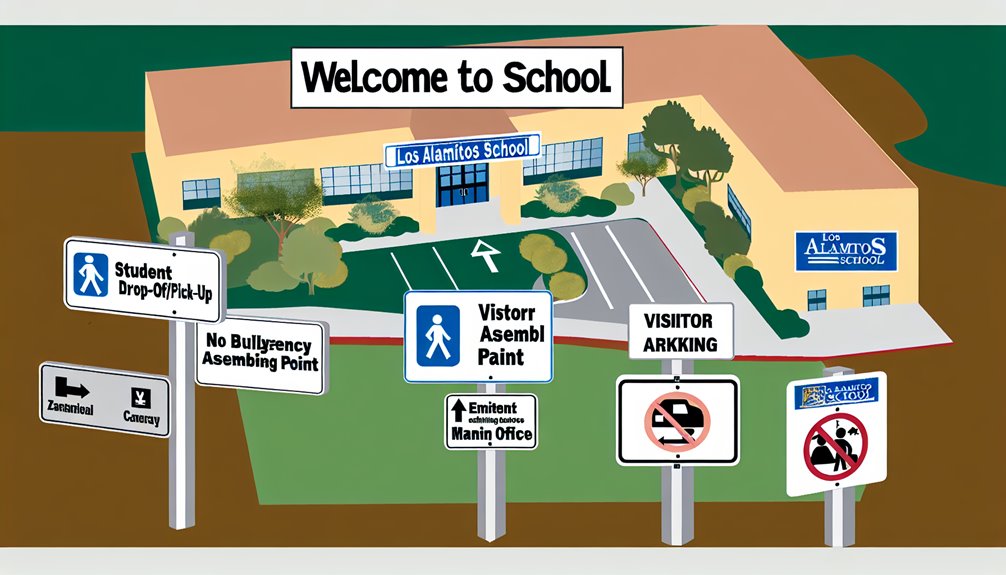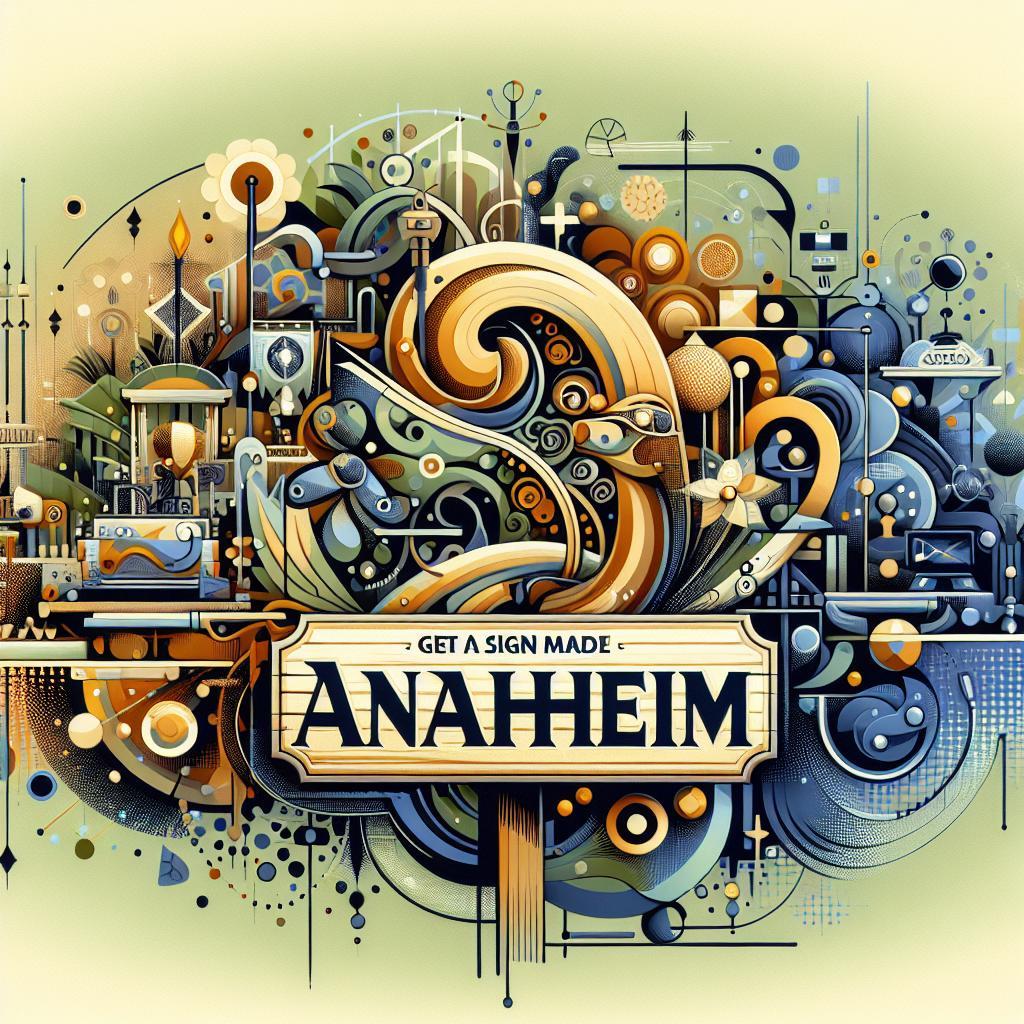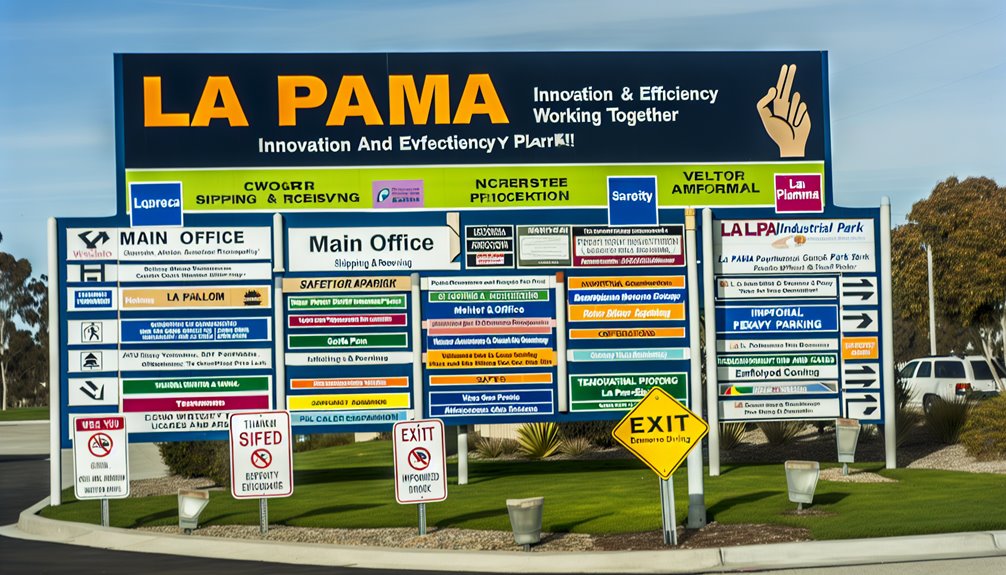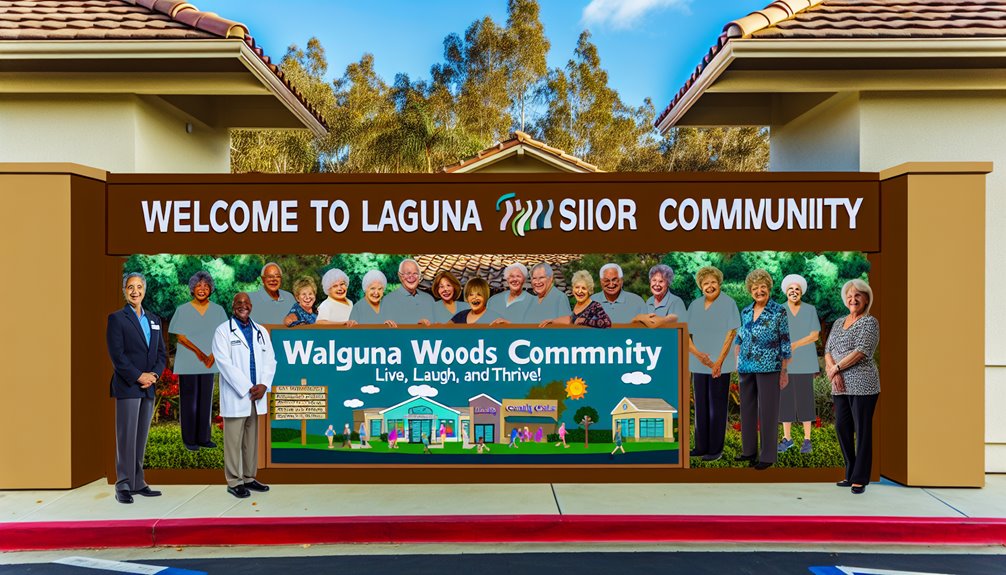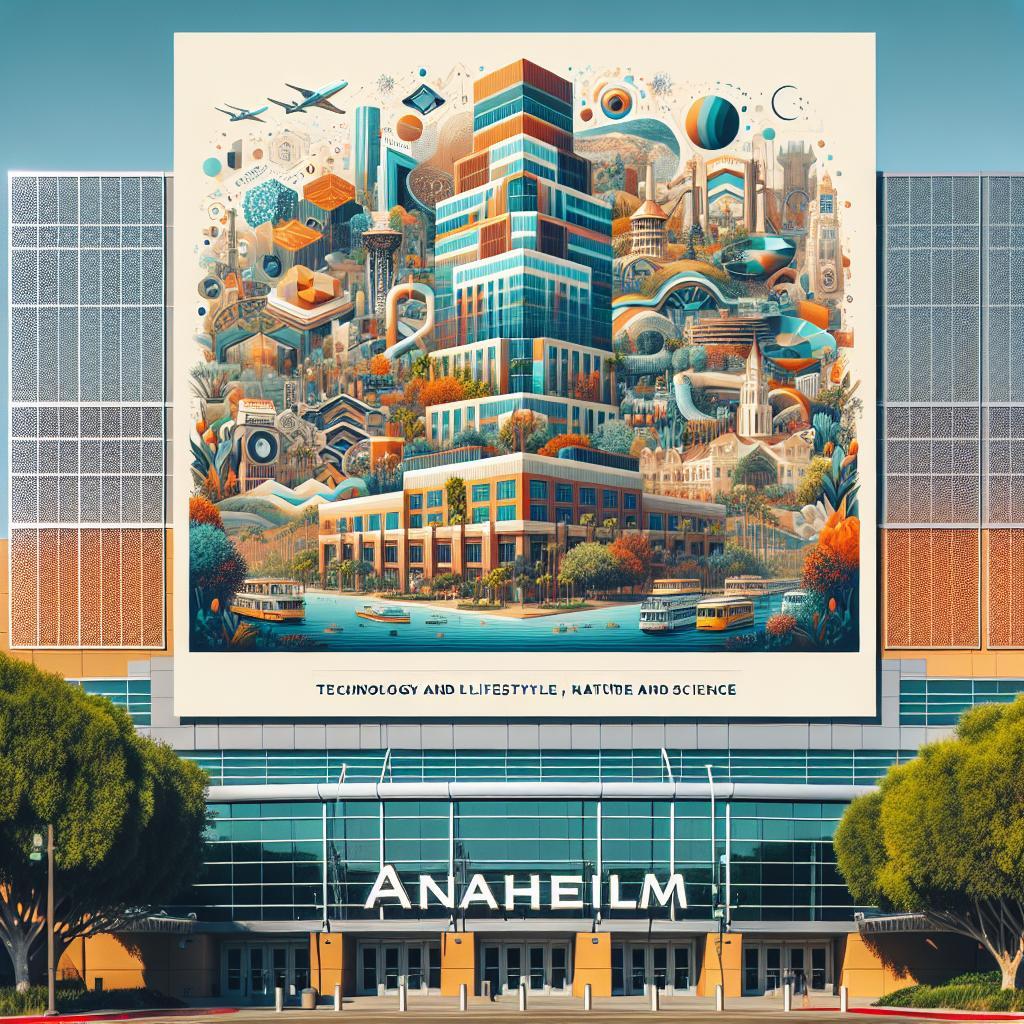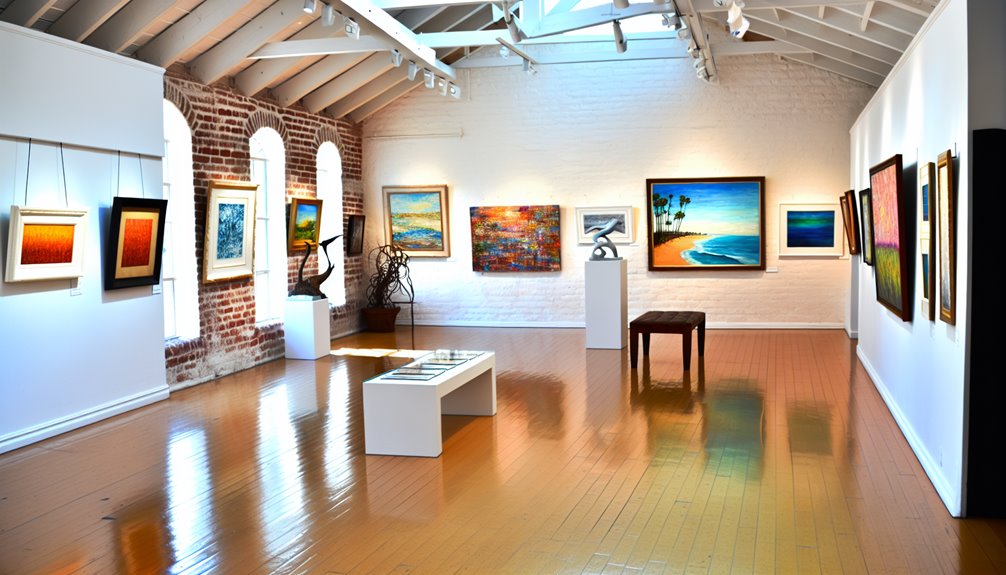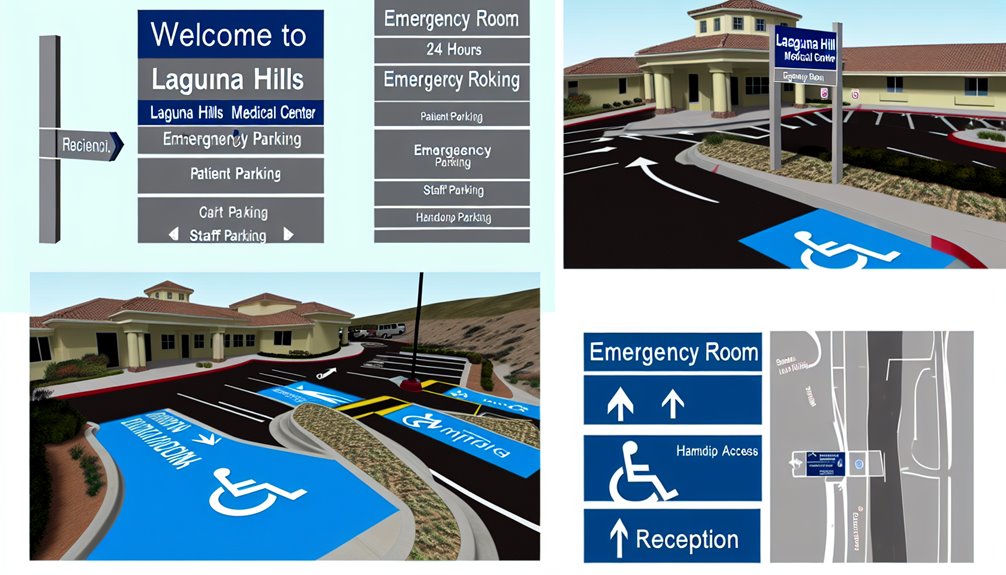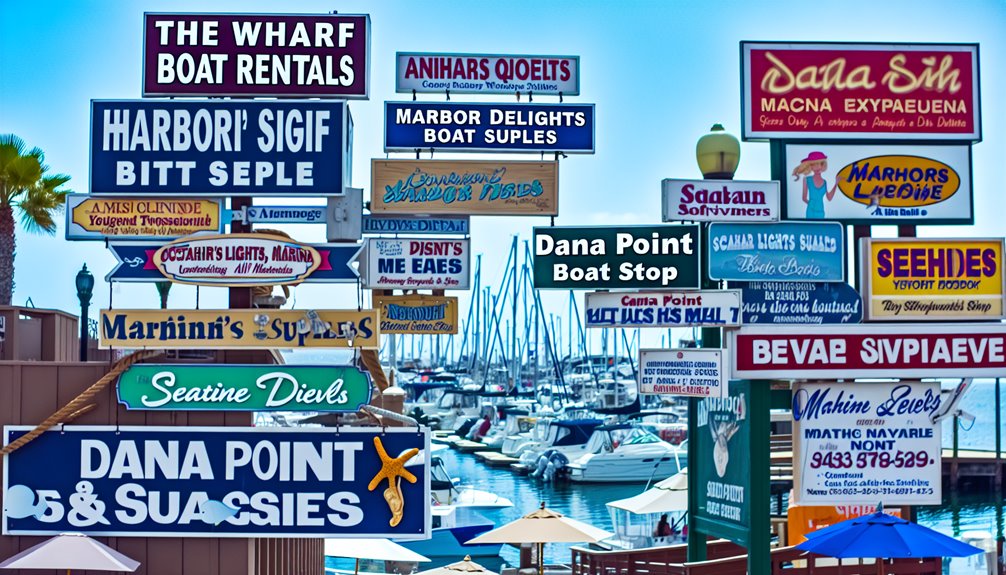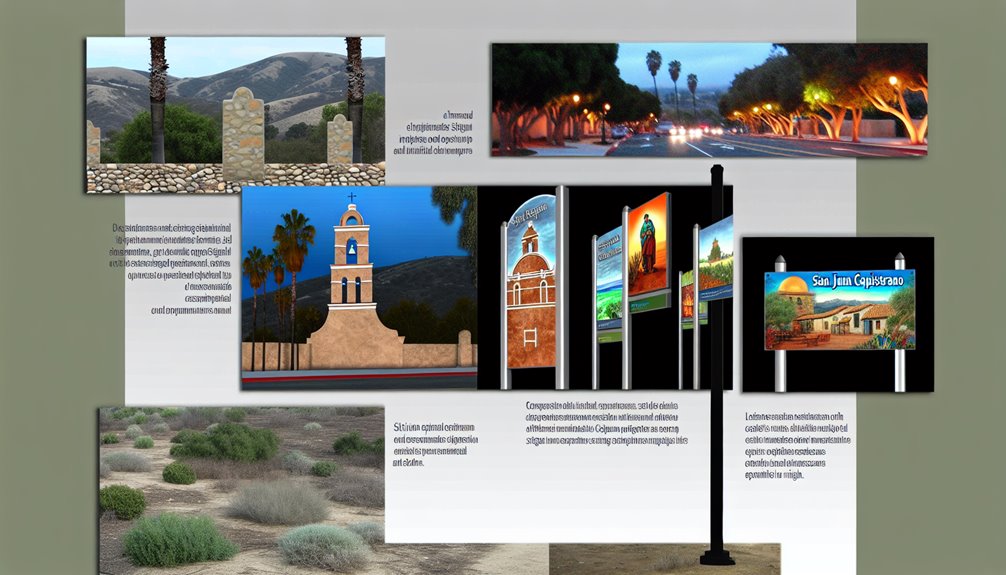We've seen Laguna Beach art gallery signs evolve beautifully, reflecting the vibrant growth of the local art scene. Initially, these signs were purely functional, but today, they inspire us by embodying the galleries' unique identities and artistic visions. They're designed with strategic typography and color choices, enhancing readability while setting the mood for visitors. Modern three-dimensional signs offer an immersive visual experience, effectively attracting more visitors and boosting local tourism. Signage isn't just about direction; it's a form of art that invites us to explore deeper, offering a preview that entices us to discover what artistic treasures lie beyond.
History of Gallery Signage
The history of gallery signage has evolved considerably over the years. Initially, signs at Laguna Beach art galleries were purely functional, marking locations without much thought to aesthetic or historical significance.
However, as the art scene flourished, so did the attention to the signs themselves, reflecting the artistic evolution within.
We've seen a shift from basic plaques to more elaborate installations that echo the creativity housed within. Early signs were often simple, text-based indicators, but as galleries began to recognize the role of signage in audience engagement, they adopted more visually striking and thematic designs.
This isn't just about guiding visitors; it's about making a statement, setting a mood, and honoring the artistic spirit.
Moreover, as galleries evolved, the signs became a part of the artistic dialogue, not mere pointers but integral elements that converse with the art they herald. They now carry a dual burden: to inform and to inspire.
This transformation mirrors broader trends in cultural presentation and consumption, where every element of the experience aims to add value and deepen understanding.
Thus, understanding this evolution helps us appreciate not just where we are, but how we got here, underscoring the interconnectedness of art's form and function.
Additionally, the use of modern materials like glass and vinyl in signage has allowed for more innovative and visually appealing signs that enhance the aesthetic experience at galleries, further bridging the gap between functional signage and artistic expression.
Design Elements in Signs
Exploring design elements in signs, we notice a variety of features that enhance their effectiveness and aesthetic appeal. Particularly in the area of typography styles, we see that the choice of font can notably influence the readability and ambiance of a sign.
For example, a sleek, modern sans-serif can convey a sense of contemporary sophistication, ideal for galleries showcasing avant-garde art. Conversely, a classic serif might be used to evoke a sense of tradition and reliability, suitable for establishments with historic collections.
Color psychology also plays an essential role. The right colors can affect mood and behavior, making them indispensable in sign design. Warm colors like red and orange are energetic and attention-grabbing, but might be too aggressive for a serene gallery space, where cooler hues such as blue or green dominate, promoting calmness and focus.
Understanding these elements allows us to tailor signs that not only communicate effectively but also contribute to the overall aesthetic of the space.
It's about crafting an experience from the moment someone lays eyes on the sign, ensuring it speaks clearly and cohesively with the art it heralds.
Incorporating three dimensional signs in art galleries can further elevate the spatial interaction, making the exhibition more immersive and engaging.
Impact on Local Tourism
While considering how design elements in signs influence the ambiance and communication of art galleries, we also observe their broader role in attracting visitors. Intricate and carefully crafted signs don't just serve as functional elements; they act as silent ambassadors for Laguna Beach's cultural scene, pulling in art enthusiasts and casual tourists alike.
Tourism statistics underscore the impact of these aesthetic markers. Galleries with distinct, artistic signage consistently report higher foot traffic, which translates to increased visitor engagement and spending in the area. This isn't merely coincidental; it's a demonstration of the power of visual appeal in creating a magnetic cultural hub.
The unique signs serve as both a preview of the gallery's style and an invitation to a richer, more immersive experience. Consequently, we see a symbiotic relationship between sign design and tourism growth.
As more visitors are drawn to these visually appealing entry points, local businesses and eateries enjoy spillover benefits, bolstering the overall economic health of Laguna Beach. Engaging signs not only enhance the tourist experience but also stitch our community's cultural fabric tighter, making our city a must-visit destination on the art circuit map.
To effectively capture this audience, galleries often leverage color psychology in their signage, utilizing hues that evoke creativity and calm, enticing potential visitors to explore further.
Famous Gallery Signs
Several iconic gallery signs in Laguna Beach have become landmarks in their own right, enchanting both art lovers and photographers. These signs aren't just markers but gateways to the innovative worlds created by famous artists.
We've seen how these signs reflect the iconic styles and visionary aesthetics of the galleries they adorn. Each sign is a prelude to the masterpieces housed within, designed to capture the essence of creativity that lies behind their doors.
The Peter Blake Gallery, for instance, sports a minimalistic sign that mirrors the modern and contemporary art it champions. It's a beacon for enthusiasts of cutting-edge art forms, guiding them to a space where convention meets the avant-garde.
Similarly, the Coast Gallery sign, with its vibrant colors and bold typeface, signals a place where diverse artistic expressions converge, celebrating everything from abstract to realism.
These signs do more than just announce a location; they encapsulate the identity and ethos of the galleries. They're crafted not merely to inform but to intrigue and inspire, pulling us into a deeper exploration of art's endless boundaries.
For us, these aren't just signs; they're an integral part of the art narrative in Laguna Beach, each telling its own unique story.
The aesthetic appeal and strategic placement of these signs reflect the principles of wayfinding signage, enhancing the visitor's journey by making these cultural spots easily identifiable and accessible.
Crafting Techniques Explored
We now explore the crafting techniques behind these fascinating signs, each shaped by skilled artisans who blend traditional methods with modern innovations.
As we investigate the world of Laguna Beach art galleries, the distinction between classical hand painted techniques and cutting-edge digital fabrication becomes apparent. Artisans who master hand painting understand the nuances of brush strokes, the blending of pigments, and the subtleties of shading that give each sign its unique character. This approach connects us to the historical roots of signage artistry.
Conversely, digital fabrication offers precision and repeatability that are unattainable by hand. Utilizing software and machinery, artists can create intricate designs that are both complex and consistent.
This technology enables the production of signs that aren't only visually stunning but also highly durable and resistant to environmental factors.
Additionally, the resurgence of hand-lettering in recent years has enriched the cultural tapestry of Laguna Beach, bringing a personalized touch that distinguishes local art galleries.
Interviews With Gallery Owners
Building on our understanding of the techniques behind Laguna Beach gallery signs, we next sought the insights of gallery owners themselves. Direct conversations revealed how deeply these proprietors intertwine their artistic vision with their business practices, illuminating the integral role that signage plays in communicating the essence of their galleries.
One gallery owner shared, "Our sign isn't just a marker; it's the first stroke on the canvas of what visitors can expect inside." This statement captures the widespread sentiment that signs are a prelude to the artistic narratives housed within the walls. Each sign, they insist, must resonate with the gallery's unique aesthetic, a non-verbal cue to the curated experiences awaiting art aficionados.
Through these interviews, it became clear that gallery owner insights aren't merely operational but are steeped in a profound understanding of art's communicative power. They view their signs as an extension of their artistic ethos, each crafted to not only attract attention but also to reflect the philosophical underpinnings of their exhibits.
This blend of commerce and creativity is what sets Laguna Beach galleries apart, making each a distinct beacon of artistic expression. The owners' stories reinforce the importance of signs as both practical tools and symbolic bearers of their artistic vision.
Sign Regulations and Challenges
Steering through the regulatory landscape presents notable challenges for Laguna Beach gallery owners enthusiastic to express their artistic vision through signage.
We've found that maneuvering sign placement while adhering to strict zoning laws requires a sophisticated understanding and strategic planning. These laws dictate not only the size and height of our signs but also their illumination and positioning, which can greatly impact how we draw attention to our artistic spaces.
The intricacies of these regulations often mean that we must collaborate closely with city planners and legal experts to guarantee compliance. This teamwork is essential, as non-compliance can lead to hefty fines or, worse, the removal of our signs.
We're constantly balancing the need to catch the eye of art lovers with the necessity to fit within the city's aesthetic and legal frameworks.
Moreover, the dynamic nature of these zoning laws means that we must stay continually informed about any changes that could affect our current and future signage plans.
It's a challenging puzzle, but one that we tackle with creativity and resilience. After all, our signs aren't just functional; they're a public declaration of our cultural contribution to Laguna Beach's vibrant artistic community.
Future Trends in Signage
Looking ahead, three major trends are set to redefine how we design and implement signage in the art gallery industry.
First, digital signage is gaining momentum, offering dynamic and interactive experiences that not only attract viewers but also give us real-time capabilities for updating content. Imagine, as an artist updates their portfolio or exhibition themes, so too can the corresponding signs, seamlessly keeping pace with the latest offerings.
Secondly, there's a substantial shift towards using sustainable materials in signage. We're seeing an increase in the adoption of biodegradable and recycled components that align with our environmental commitments. This isn't just good practice; it's a crucial part of our responsibility to the planet and resonates deeply with our eco-conscious patrons.
Lastly, the integration of technology and artistry is becoming increasingly sophisticated. Signs are no longer mere pointers; they're becoming integral parts of the artistic expression, enhancing the aesthetic and emotional impact of our exhibits.
These trends not only promise to enhance the way we engage with our audiences but also guarantee we remain at the forefront of innovation in the art gallery sector.
We're excited to see where these advancements will take us and how they'll transform our interactions with art lovers.
Frequently Asked Questions
Are Custom Signs More Expensive Than Standard Options?
We've found that custom signs tend to be more expensive than standard options due to their unique benefits, such as tailored designs, which outweigh the drawbacks like the higher cost and longer production times.
How Long Does It Take to Install a Gallery Sign?
We've found that installation timing for a gallery sign depends largely on sign placement. Typically, it takes a few hours, but complex locations might extend this. Let's guarantee precision to achieve the best impact.
Can Gallery Signs Be Eco-Friendly or Recycled?
We're exploring whether gallery signs can be made from sustainable materials or utilize recycled options. It's crucial to prioritize eco-friendly practices to align with our commitment to environmental responsibility and artistic integrity.
What Maintenance Is Required for Outdoor Gallery Signs?
We're addressing the upkeep needed for outdoor gallery signs. Regular sign cleaning and ensuring weather resistance are essential. This maintenance prevents fade and wear, keeping the artwork's informational and aesthetic integrity pristine.
Are Digital Signs Permitted for Galleries in Laguna Beach?
We're exploring whether galleries can use digital signs, focusing on specific regulations and necessary permits. It's essential to understand local digital sign regulations and secure the right permits to guarantee compliance and avoid penalties.
Table of Contents
Toggle